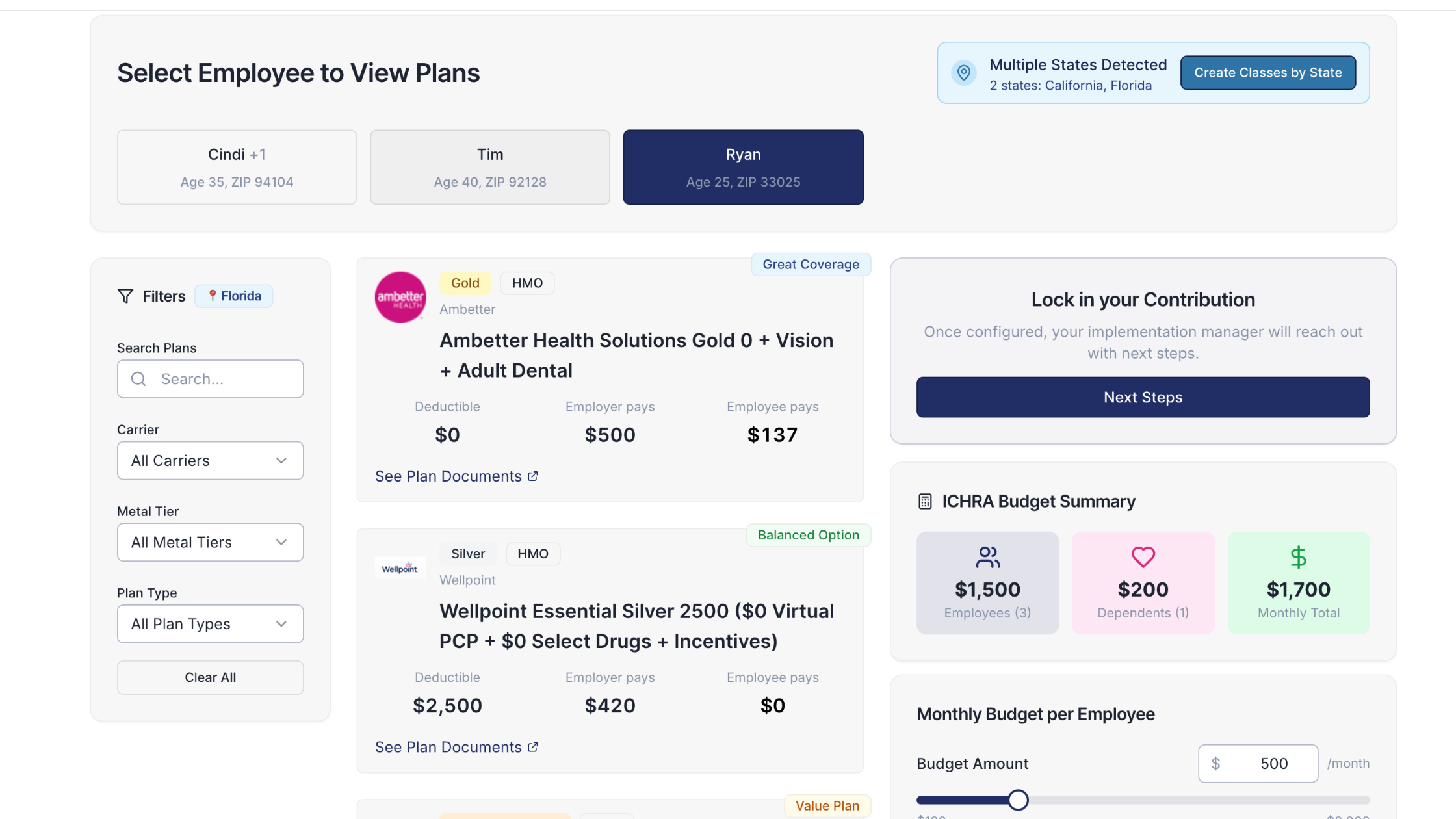Exempt vs. Non-Exempt Employees: A Comprehensive Guide

Understanding Exempt Employees: What You Need to Know
When it comes to exempt employees, there is a lot to unpack. These are the employees who are exempt from certain provisions of the Fair Labor Standards Act (FLSA) and are not entitled to overtime pay for working more than 40 hours a week. Let's explore the different types of exempt employees and debunk some common misconceptions along the way.
Exploring the Different Types of Exempt Employees
Exempt employees can be classified into various categories, such as executive, administrative, professional, and computer-related positions. Each category has specific criteria that must be met to qualify for exemption. It's essential to understand these criteria to ensure proper classification of your employees.
For example, executive exempt employees typically have management responsibilities and supervise others. They are responsible for making important decisions that impact the company's operations and have the authority to hire, fire, and promote employees. These individuals play a crucial role in shaping the organization's direction and ensuring its success.
On the other hand, administrative exempt employees perform non-manual work related to the management of the business. They handle tasks such as record-keeping, bookkeeping, and coordinating administrative functions. These employees are essential in maintaining the smooth operation of the organization and supporting other staff members.
Professional exempt employees are those who have specialized knowledge in their respective fields. They often hold advanced degrees or have extensive training and experience. These employees provide valuable expertise and contribute to the growth and innovation of the company.
Computer-related positions involve work related to computer systems analysis and programming. These employees are responsible for designing, developing, and maintaining computer systems and software. They play a crucial role in ensuring that the organization's technological infrastructure is efficient and up to date.
Common Misconceptions About Exempt Employees
There are several misconceptions about exempt employees that can lead to confusion. One common misconception is that exempt employees always receive a higher salary than non-exempt employees. While exempt employees may receive a higher salary, it is not a requirement for exemption. Exemption status is determined by meeting specific criteria, not solely based on salary.
Another misconception is that exempt employees have no work-hour restrictions. While exempt employees are generally not eligible for overtime pay, it doesn't mean they don't have a set number of hours they must work. Exempt employees are still expected to fulfill their job duties and meet performance expectations.
It's important to note that exempt employees often have a higher level of responsibility and autonomy in their roles. They are trusted with making critical decisions and are expected to demonstrate a high level of professionalism and dedication. However, this does not mean that exempt employees are expected to work excessively long hours or sacrifice work-life balance.
Understanding the different types of exempt employees and debunking common misconceptions is crucial for employers to ensure compliance with labor laws and to create a fair and equitable work environment. By properly classifying employees and providing clear expectations, employers can foster a positive and productive workplace for all.
Decoding Non-Exempt Employees: A Comprehensive Guide
Now, let's turn our attention to non-exempt employees. Unlike exempt employees, non-exempt employees are entitled to overtime pay for hours worked beyond the standard 40 hours per week. Understanding the key differences between exempt and non-exempt employees is crucial for proper employee classification.
Non-exempt employees play a vital role in organizations, as they often form the backbone of the workforce. These employees are typically involved in tasks that require a high level of supervision and are not considered to have the same level of autonomy as exempt employees. They may include positions such as administrative assistants, customer service representatives, and entry-level workers.
Key Differences Between Exempt and Non-Exempt Employees
The main difference between exempt and non-exempt employees lies in their entitlement to overtime pay. Non-exempt employees are eligible for overtime pay at a rate of 1.5 times their regular pay for any hours worked over 40 in a workweek. Exempt employees, however, are exempt from overtime pay requirements.
It is important to note that the determination of exempt or non-exempt status is not solely based on job titles. The Fair Labor Standards Act (FLSA) provides specific criteria that must be met to classify an employee as exempt. These criteria include the employee's salary level, job duties, and level of decision-making authority.
Additionally, non-exempt employees typically have more restrictive work-hour regulations compared to exempt employees. Employers must keep accurate records of non-exempt employees' hours worked to ensure compliance with wage and hour laws.
Employers must also be aware of state-specific labor laws, as they may have additional requirements beyond the federal standards set by the FLSA. These state laws may further define what constitutes an exempt or non-exempt employee and may provide additional protections for workers.
The Importance of Properly Classifying Employees
Properly classifying employees as exempt or non-exempt is essential to comply with labor laws and avoid costly penalties. Misclassifying employees can result in legal consequences and damage your company's reputation. Taking the time to understand the classification criteria and ensure accurate classification is crucial for a smooth running and compliant workplace.
Furthermore, properly classifying employees can help promote fairness and transparency within an organization. It ensures that employees are compensated appropriately for their work and that they receive the benefits and protections they are entitled to under the law.
Proactive classification of employees can also help employers identify potential compliance issues and make necessary adjustments to their workforce management strategies. By understanding the differences between exempt and non-exempt employees, employers can better allocate resources, manage workloads, and ensure compliance with labor laws.
In conclusion, the proper classification of employees as exempt or non-exempt is not only a legal requirement but also a crucial aspect of maintaining a fair and compliant workplace. By understanding the key differences between these two categories, employers can ensure that their employees are treated fairly, compensated appropriately, and protected under the law.
The Impact of Exemption Status on Wages: What Employers Should Know
Now that we've covered the basics of exempt and non-exempt employees, let's explore how exemption status affects wages and compensation for employees.
Understanding Overtime Pay for Exempt and Non-Exempt Employees
As mentioned earlier, non-exempt employees are entitled to overtime pay for any hours worked over 40 in a workweek. The overtime rate typically amounts to 1.5 times their regular pay rate. This provides a financial incentive for employers to manage and monitor non-exempt employees' work hours effectively.
How Exemption Status Affects Salary and Benefits
Exemption status can impact an employee's salary and benefits package. Exempt employees are often paid on a salary basis, while non-exempt employees may be paid an hourly wage. This difference in pay structure can affect how compensation is calculated and the eligibility for certain benefits.
Additionally, exemption status can influence the availability of flexible work arrangements. Exempt employees, who are not restricted by overtime pay requirements, may have more flexibility in their schedules and remote work options.
Avoiding Costly Mistakes: Penalties for Employee Misclassification
Employee misclassification can have severe consequences for employers. Let's take a closer look at the potential legal and financial penalties associated with misclassifying employees.
Legal Consequences of Misclassifying Employees
Misclassifying employees can result in legal disputes and potential lawsuits by employees. In addition to litigation, employers may face government audits and investigations if they are suspected of misclassification. These consequences can be time-consuming, expensive, and damaging to a company's reputation.
Steps to Ensure Proper Employee Classification
To avoid the potential pitfalls of employee misclassification, employers should take proactive steps. First and foremost, familiarize yourself with the criteria for exempt and non-exempt classifications. Regularly review job descriptions and duties to ensure they align with the appropriate classification.
It's also crucial to maintain accurate records of hours worked and regularly audit employee classifications. Seeking legal counsel and guidance can provide an added layer of protection and ensure compliance with labor laws.
Navigating Health Benefits for Exempt and Non-Exempt Employees
Employee classification can also impact the provision of health benefits. Let's explore the considerations for offering competitive and affordable health benefits to both exempt and non-exempt employees.
Offering Competitive Health Benefits to Exempt Employees
When it comes to exempt employees, it's essential to offer competitive health benefits to attract and retain top talent. Providing comprehensive health coverage, including medical, dental, and vision plans, can enhance job satisfaction and employee well-being. Additionally, offering flexible spending accounts (FSAs) and health savings accounts (HSAs) can provide employees with additional financial planning opportunities.
Providing Affordable Health Benefits for Non-Exempt Employees
Non-exempt employees may have different financial considerations when it comes to health benefits. Employers should explore options for providing affordable health benefits that meet the needs of their non-exempt employees. This could include offering lower-cost health insurance options or providing wellness programs to promote a healthy lifestyle.
In Summary: Understanding Employee Classification and Benefits
Employee classification, whether exempt or non-exempt, plays a significant role in both employee rights and employer responsibilities. By understanding the criteria for exemption, the consequences of misclassification, and the impact on wages and benefits, employers can navigate this complex landscape with confidence.
Remember, proper employee classification is crucial to maintain compliance with labor laws, avoid penalties, and foster a positive work environment. So, take the time to educate yourself, seek guidance when needed, and ensure that your employees are classified correctly. By doing so, you can create a fair and harmonious workplace for all.
You got questions, we got answers!
We're here to help you make informed decisions on health insurance for you and your family. Check out our FAQs or contact us if you have any additional questions.
Explore more related content
What is Venteur
Explore the best human-first Health Insurance platform
Simple, personalized health benefits
Sign up in minutes, define your contribution, and let your employees choose the health plan that works right for them
Integrations to make everything run smoothly
We'll connect with your payroll and finance systems to make deductions and premium payments seamless
Easy onboarding and off-boarding
In just a few clicks, add your roster and make updates on the fly. We'll handle it from there.
Venteur Certified Brokers to help your employees pick the right plan
Our trusted brokers ensure the best outcomes for employees and employers by unlocking health savings and providing unrivaled plan options.
AI-powered plan recommendations to give you confidence while you shop
Backed by 30 years of healthcare data, Venteur’s AI helps employees compare and choose the best plan for their unique situation.
Compliance and reporting because no-duh!
Venteur manages plan administration, reporting, and compliance so you can focus on growing your business.


